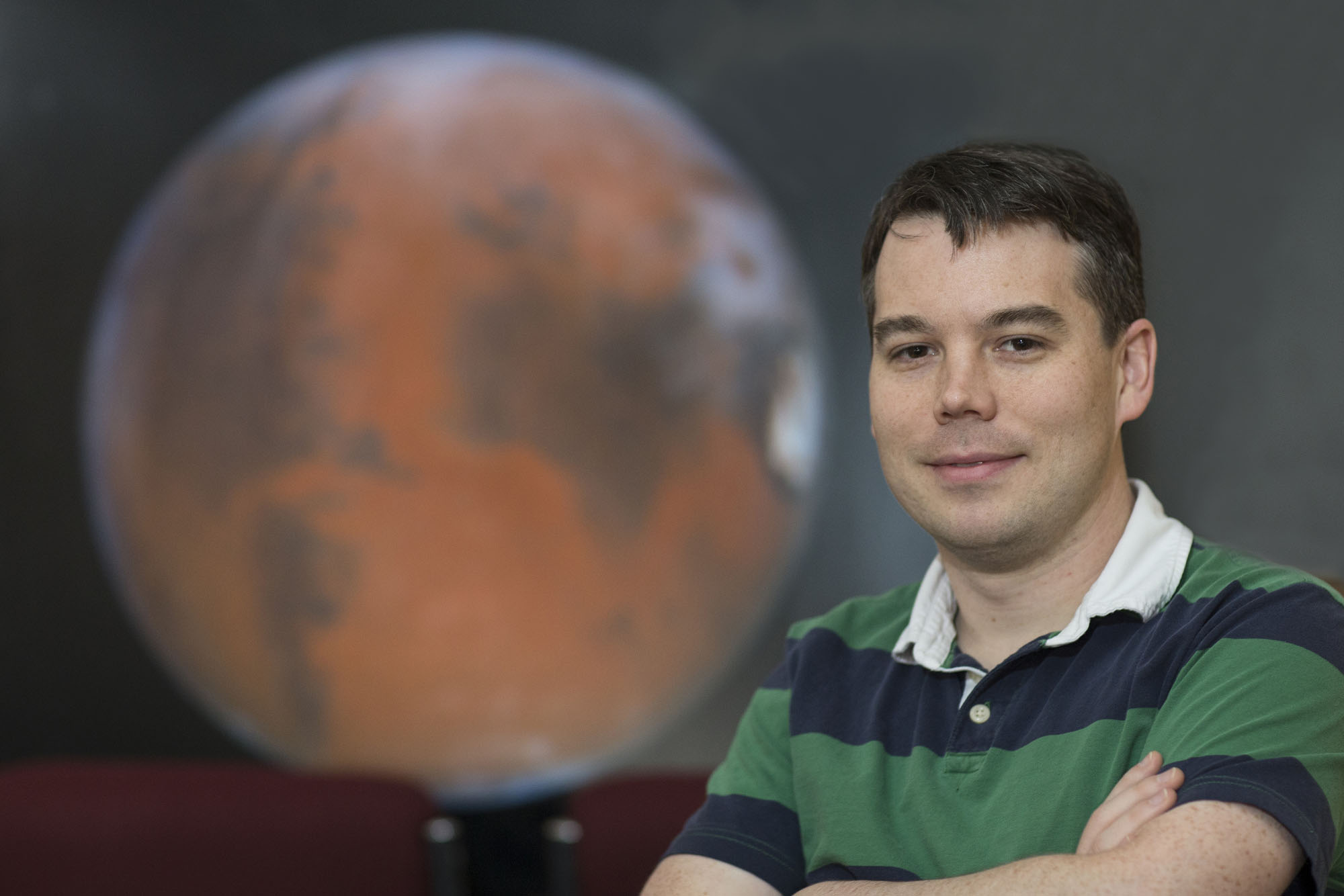The Alfred P. Sloan Foundation has named University of Virginia astronomer Shane Davis as a Sloan Research Fellow for 2015. Davis, an assistant professor of astronomy, is a theoretical astrophysicist who is an expert on using large computer simulations to model complex systems in the universe.
He is a major user of U.Va.’s new Rivanna supercomputer cluster and, since coming to the University last fall, has given momentum to computational sciences and Data Science Institute research at the University.
Awarded annually since 1955, Sloan Research Fellowships honor early-career scientists and scholars whose achievements and potential identify them as rising stars – the next generation of scientific leaders. Fellows, drawn from a diverse range of fields, receive $50,000 to further their research. This year, the foundation selected 126 researchers from 57 institutions in the U.S. and Canada.
“Becoming a Sloan Research Fellow means joining a long and distinguished tradition of scientific explorers who have gone on to make the most meaningful and significant discoveries,” Daniel L. Goroff, director of the fellowship program, said.
Past Sloan Research Fellows have developed notable careers and include such intellectual luminaries as physicist Richard Feynman and game theorist John Nash. Forty-three fellows have received a Nobel Prize in their respective field, 16 have won the Fields Medal in mathematics, 65 have received the National Medal of Science, and 14 have won the John Bates Clark Medal in economics.
Before arriving at U.Va., Davis was a senior research associate at the Canadian Institute of Theoretical Astrophysics. Prior to that, he was a NASA Chandra Fellow and member of the Institute for Advanced Study at Princeton University. He earned his Ph.D. at the University of California at Santa Barbara.
“Shane is very deserving of the Sloan Research Fellowship, which is one of the highest honors in the U.S. for a junior faculty member in the sciences,” said U.Va. astronomy department chair Craig Sarazin. “He has done particularly important work on how black holes produce the light which allows us to detect them, and he already is one of the world’s most productive theoretical astrophysicists. I believe that Shane is now the leading expert in the world on calculating the spectra of accretion disks around black holes.”
Sarazin noted that Davis’s expertise on computer modeling fits well with existing strengths in the astronomy department; for example, U.Va.’s John Hawley won the 2013 Shaw Prize in Astronomy for his computer simulations of material flowing into black holes.
A Q&A With Shane Davis
Q. Please tell a little about your research and why it’s important to astronomy.
A. First, I am trying to develop a sophisticated model of how material falling into black holes radiates light. Details of the radiation emitted by this process can tell us about the properties of space and time in the immediate environment of the black hole. Also, if we have a good enough understanding of this radiation, we can hope to confirm predictions of Einstein’s theory of general relativity.
Nearly every galaxy has a supermassive black hole at its center, and, in many cases, they seem to have a very strong impact on how the galaxy forms and evolves, so they are central to understanding why galaxies are the way they are.
A second area of research is on how radiation emitted by the formation of stars feeds back on the gas from which they are forming. Galaxies are filled with interstellar gas containing mostly hydrogen, and in some regions there is enough gas that the gravitational attraction between the gas molecules causes them to collect and form stars. But also, some processes are preventing the gas from collapsing to form stars. One possibility is that the radiation emitted by the stars heats or pushes on the surrounding gas, preventing it from collapsing, and I have been studying this possibility.
In both cases, I am using state-of-the-art numerical simulations that are run on large supercomputers. Along with my collaborators, I have spent much of my time trying to develop very sophisticated tools for modeling radiation, allowing us to do more accurate calculations of these problems than had been done before.
Q. Why do you think the Sloan Foundation selected you as a fellow?
A. I have benefited from being involved in many productive collaborations with hard-working and brilliant people who help make me look good by association. Also, I think I have had a pretty good track record of taking a comprehensive approach to the problems I study.
In the case of black holes, I have worked extensively on numerical simulation techniques, detailed theoretical calculations and direct modeling of the observed data. We have been making real progress on those problems because of it.
Also, astronomy resonates with many people’s sense of curiosity about stars and space. We work on these incredible, esoteric objects like black holes, and it amazes people that we can even hope to study such things directly.
Q. How do you intend to use your fellowship?
A. I will primarily use the fellowship to support travel for myself and my research group. I have several collaborators scattered all over the country – and in some cases, overseas – and there is no substitute for face-to-face interactions. And it is important to attend conferences to learn about what others are doing, share our own results and hopefully start new collaborations.
I also plan to use some of it to support undergraduates over the next few summers.
Media Contact
Article Information
February 24, 2015
/content/rising-star-astronomer-wins-prestigious-early-career-fellowship

